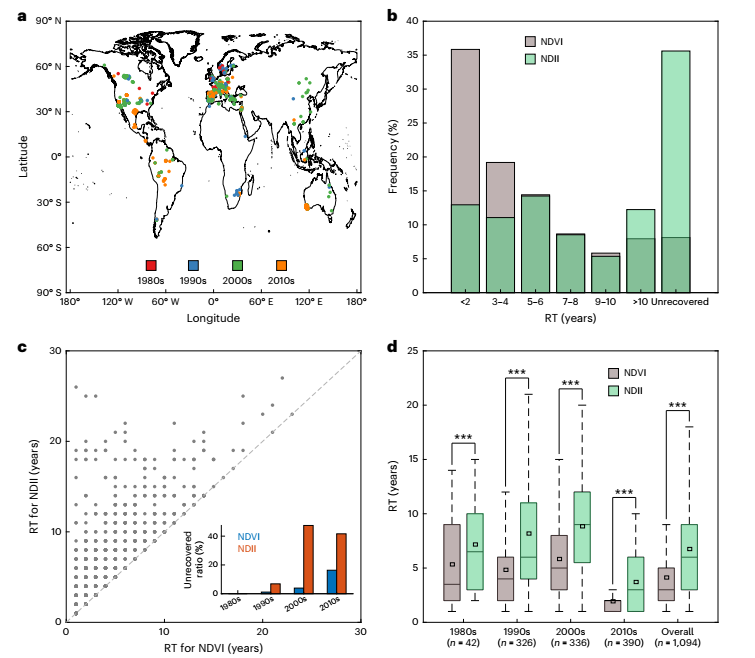In recent years, global droughts and heatwaves have led to frequent forest mortality events, posing severe challenges to forest ecosystem services. Clarifying the observed patterns and recovery mechanisms of forest mortality is crucial for accurately understanding the evolution of forest ecosystems. The team led by Academician Shilong Piao from Institute of Carbon Neutrality, Peking University, has conducted systematic researches on this topic over several years. Based on multi-source remote sensing data and sub-meter-resolution imagery, their preliminary work systematically revealed the spatiotemporal characteristics and driving mechanisms behind the coexistence of the global greening trend and increasing forest mortality, highlighting scale effects as the focal point for resolving the paradox (Nature Ecology & Evolution, 2024, doi: 10.1038/s41559-024-02372-1). However, some critical scientific questions remain insufficiently understood, such as the recovery pathways of major ecological functions following forest mortality and how climate change affects these processes.
Recently, Academician Shilong Piao’s team, in collaboration with Assistant Professor Songbai Hong and other researchers, analyzed over 150,000 Landsat images using the Google Earth Engine cloud-computing platform. The study examined 1,699 forest mortality events recorded across 1,600 global sampling sites, uncovering changes in the recovery rates of vegetation greenness and canopy water content over the past four decades. The findings demonstrate that since the 1990s, the time required for forest recovery has significantly lengthened globally, with recovery rates slowing. The results of interpretable machine learning further indicated that rising temperatures and reduced precipitation are the primary drivers of this deceleration. While the severity of forest mortality also influences recovery, its overall impact has not changed significantly and thus cannot explain the declining recovery rates. Notably, canopy water content recovery lags markedly behind vegetation greenness, suggesting that relying solely on greenness metrics may overestimate recovery rates and underestimate the long-term ecological impacts of forest mortality.

Comparison of recovery times for vegetation greenness (NDVI) and canopy water content (NDII) post-mortality
The study highlights the escalating threats of climate warming and water scarcity to forest ecosystems and emphasizes the urgent need for science-based forest management and restoration measures to mitigate the negative impacts of climate change on ecosystem functions. The findings were published in Nature Plants under the title "Satellite-based evidence of recent decline in global forest recovery rate from tree mortality events" (doi: 10.1038/s41477-025-01948-4). Assistant Professor Songbai Hong (dual-appointed at the Institute of Carbon Neutrality) and Yuchao Yan (former postdoctoral researcher at College of Urban and Environmental Sciences of Peking University, now Associate Professor at School of Geography and Planning, Sun Yat-sen University) served as co-first authors, with Academician Shilong Piao and Researcher Anping Chen from Colorado State University as corresponding authors.